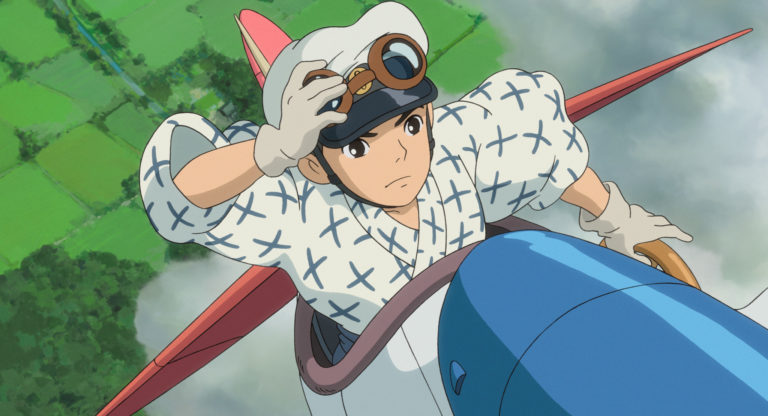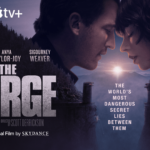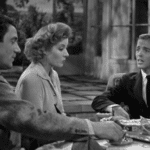(2023 is the 10th anniversary of Hayao Miyazaki’s The Wind Rises)
Hayao Miyazaki, the notable film director behind such Studio Ghibli classics as Howl’s Moving Castle, Princess Mononoke, and Spirited Away, is known for his incredible films that take viewers to imaginative worlds where yōkai visit bath houses, robots come to life, and possessed animals fight against man, all while often young, and frequently female, characters are given rich coming-of-age stories that remind we jaded adults about the magic, joys, and trials of adolescence. That’s what made it so surprising when it was announced that Miyazaki’s 2013 film The Wind Rises was, perhaps despite it’s aviation subject matter, to be more grounded in reality and history as it told a semi-biographical tale of Jiro Horikoshi, an engineer behind many of Japan’s WWII fighting planes. Not only did it seem to go contrary to Miyazaki’s love of fantasy, but it also tackled the telling of a man’s story who himself helped invent many war machines, the likes of which were critiqued in such films as Castle in the Sky and Nausicaä of the Valley of the Wind. While this complexity still remains in the film, and Miyazaki has not made a similar film since, there’s still Miyazaki touches that set the film apart from other beloved anime films, while connecting them to his own work. In this article I will discuss what makes The Wind Rises a truly unique Miyazaki offering a decade after its release, while also highlighting its connective tissues as well that still make it a Ghibli classic.
A Brief Synopsis of ‘The Wind Rises’
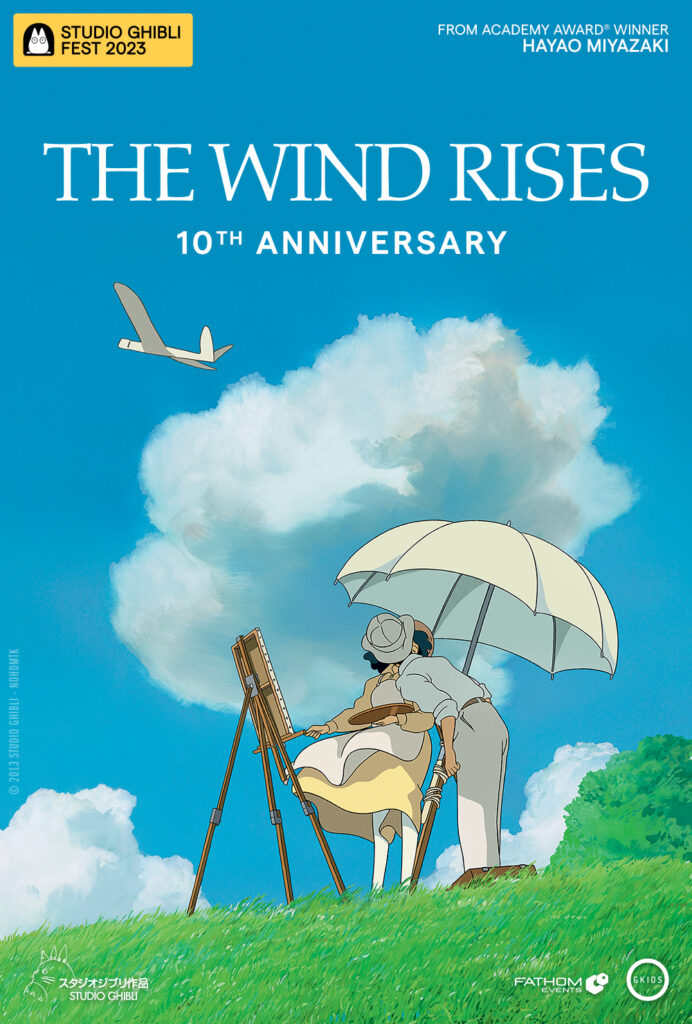
Miyazaki begins The Wind Rises with young Jiro who as a child dreams of flying a plane one day himself; however, due to his nearsightedness he learns he will never be able to. In a dream though his hero Giovanni Battista Caproni, a famous Italian aircraft designer in his own right, tells Jiro he never flew either but instead chose to still build and design the planes he loved. This sets Jiro off on a path where he studies aeronautical engineering and eventually begins to design planes for Mitsubishi. As he’s building his career he also meets and marries Nahoko Satomi, and they develop a life together. The story covers Jiro’s full life from there which is filled with highs and lows, as he deals with incredible successes and tragedies alike.
Sources for Jiro’s Story
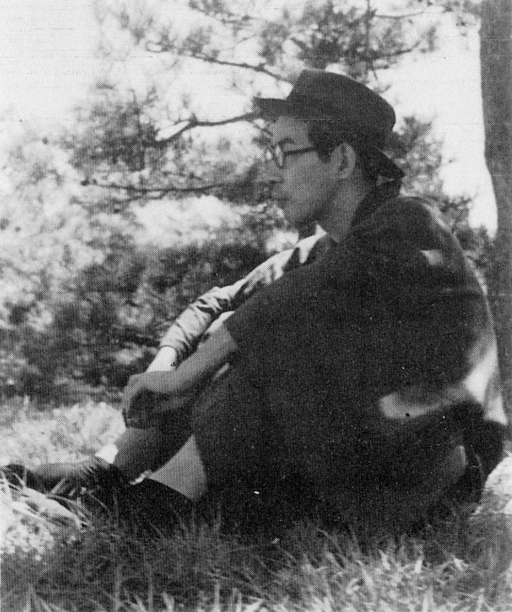
Tatsuo Hori during the time he was writing The Wind Has Risen
English: unknown日本語: 不詳, Public domain, via Wikimedia Commons
Miyazaki himself was born in the midst of WWII, and though he would not have likely seen Jiro’s impact at that young age, as a man fascinated with planes, as demonstrated in much of his work including most notably Porco Rosso, it’d be no surprised Miyazaki learned of Jiro shortly after WWII ended. Miyazaki did not need a factual retelling of Jiro’s life anyways, as he took significant liberties with the story, as he blended a significant portion of Tatsuo Hori’s 1937 semi-autobiographical novel The Wind Has Risen with Jiro’s own story. Therefore the resulting film is essentially a hybrid of Hori’s and Jiro’s lives.
Common Themes of Miyazaki’s Works in The Wind Rises
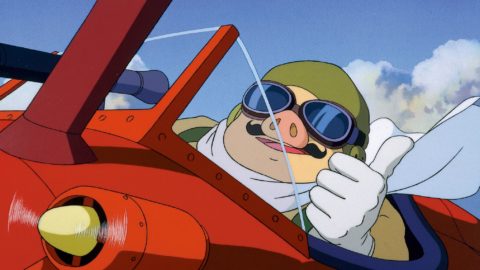
Miyazaki’s 1992 film Porco Rosso
I mentioned how this story is comparably grounded in reality, especially when paired with Spirited Away, My Neighbor Totoro, and Miyazaki’s other fantastical works; however, there’s still a lot of classic Miyazaki to behold in this film.
Aviation
Miyazaki has demonstrated a love of aviation and flight in many of his films, including most notable Porco Rosso, but even stories such as Nausicaä of the Valley of the Wind and Kiki’s Delivery Service have incredible sequences featuring flight. Therefore it’s not really a surprise that Miyazaki himself would be enamored by the planes he might have seen as a child or read about and seen in films.
Love
One of the greatest aspect to me of Miyazaki’s films is how love is shown, and what’s especially unique is how it’s not always just heteronormative romances that are highlighted, though that’s exactly what is demonstrated in The Wind Rises.
War / Anti-War
Though Miyazaki’s portrayal of war is often portrayed as incredibly anti-war, or at least quite complex as in Porco Rosso; The Wind Rises has seemed for many to be a stark contrast as it portrays a man who made literal machines of war. Still Jiro is shown near the end of the film to regret the use of his machines for war, and thus we see Miyazaki’s perhaps conflict himself, as someone fascinated by machines but also one who so often despises their use in conflict.
What Makes The Wind Rises So Distinctive
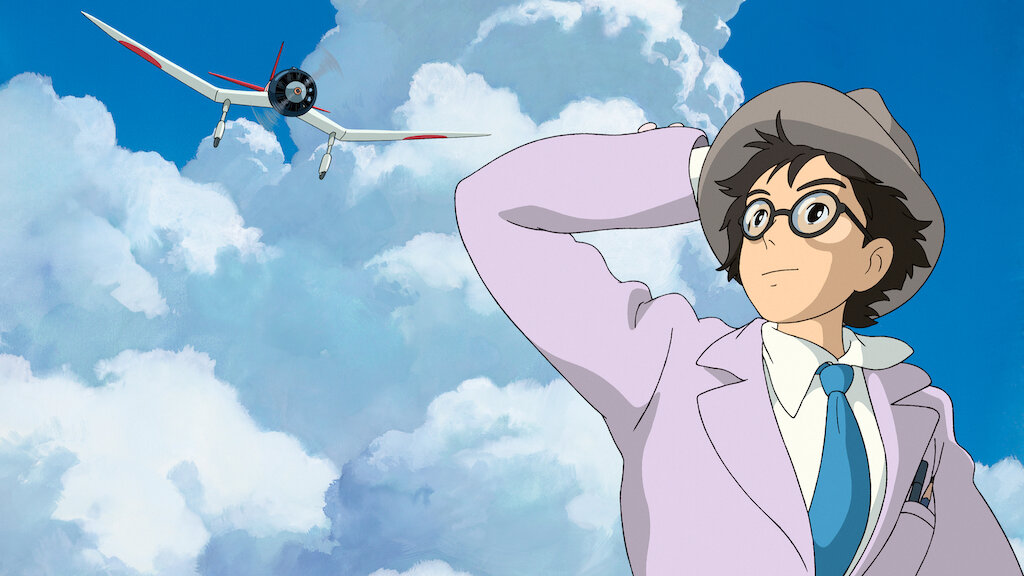
Jiro in The Wind Rises
Though Miyazaki has imbued the film with some of his favorite themes to discuss, there are also elements that make this a particularly unique film for Miyazaki’s catalog, even if other directors of Ghibli films interrogate these same ideas.
Passage of Time
Prior to The Wind Rises, none of Miyazaki’s films appear to span more than perhaps a years time, and even that seems like too high of an estimate. The Wind Rises though covers nearly the entire lifetime of Jiro, from his adolescence, all the way to his demise.
Realism
I’ve already alluded to this, but this being a quasi-biography based on real people means that in this film we are in a world that actually looks like our own. Other Ghibli films, including his son Goro’s From Up On Poppy Hill, also use the real world as a canvas for storytelling; however, for Miyazaki there has always been one fantastical element, or often many, that feature in his films.
Death
Though violence does feature in Nausicaa and Princess Mononoke, and along with it death, very rarely are we shown the death of any primary characters in Miyazaki’s films. (Other Ghibli works including those by Isao Takahata, the director of Ghibli’s Graveyard of the Fireflies, is understandably a different story.) Yet here we are presented with -spoiler warnings- two characters and their natural deaths (even if one is certainly untimely.)
10 Years Later: My Personal Connection with The Wind Rises
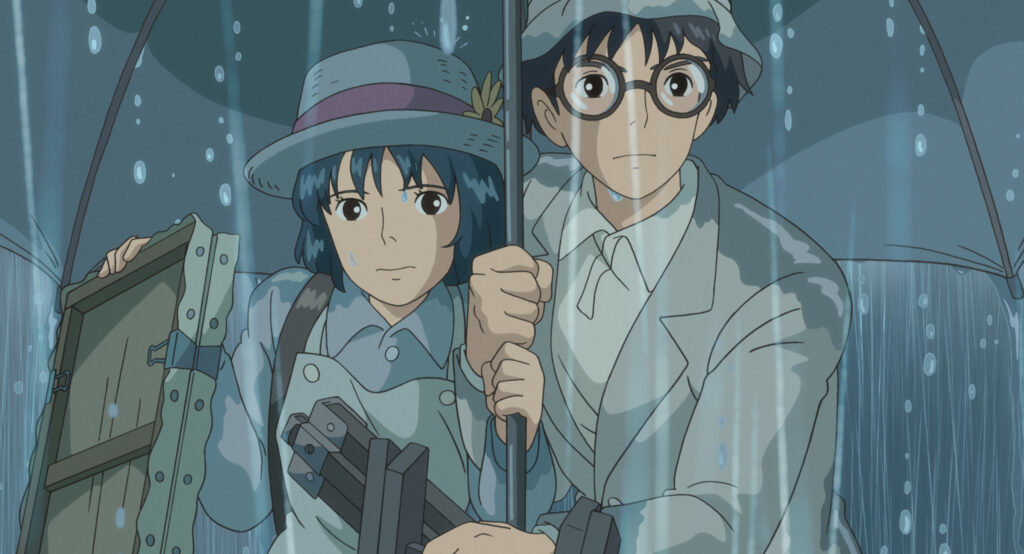
Naoko and Jiro in The Wind Rises
(Spoiler warning)
Though I wouldn’t put The Wind Rises in my top 5 Miyazaki films, which admittedly is an incredibly competitive field, it’s realness always gave it a special place in my heart that only exists for a few Ghibli titles: most notably The Wind Rises, Whisper of the Heart, and depending on the day perhaps my favorite Ghibli film From Up on Poppy Hill.
When I first watched The Wind Rises, it was on a day I will always remember as one where I realized I had fallen in love. In fact, I had scheduled a time with friends, and a local anime club I helped run, to go see the film, but it was as I was leaving a girl, who I’d spent part of the morning with, to see the movie that I knew my feelings for her right then and there and that I actually hated knowing I was having to leave her to see the film.
Once I got to the theaters, a little late, I was fortunately surrounded by my wonderful friends and I began to get incredibly excited to see the film. Then as the film played what I watched really just hit home anew, especially as someone who believed he just found the woman he loved. After all here was a story that was both about the career of one man, but also his love for his wife in times both good and bad, which even if you aren’t in the throngs of love can be really impactful.
What resonates with me now is different from what hit me then, though it still resolves around the key pairing of Jiro and his wife Naoko. At the time, I saw their brief time together as solely tragic, as life intervened in many ways in their romance and lives. Now 10 years on, and far removed from the love I hoped for on that day in March, I see it as still tragic, but ultimately it’s also a time to be treasured in their relationship however brief. Since 2014 (as we didn’t get it in the U.S. till a year later), I’ve lost friends and loved ones alike, as well as friendships and potential romance, and though it all hurts, what I hold is the time spent with those I cared for. We will all shuffle off this mortal coil someday; so we only have the time together, and seeing The Wind Rises reminded me of that essential life lesson.
The Wind Rises is a part of GKIDS GhibliFest 2023 line-up, so you can see it this year in theaters on August 21st or 23rd thanks to GKIDS. You can also secure a copy via GKIDS’s website or watch The Wind Rises on demand.
